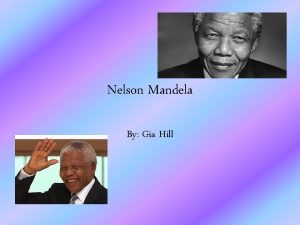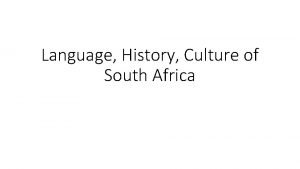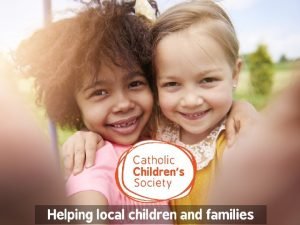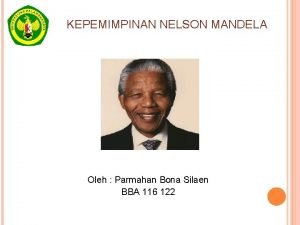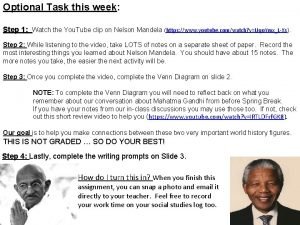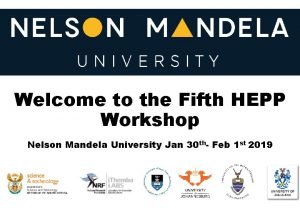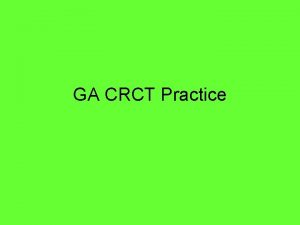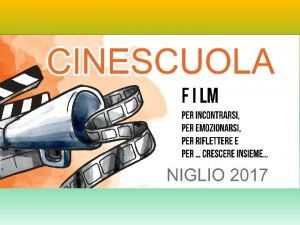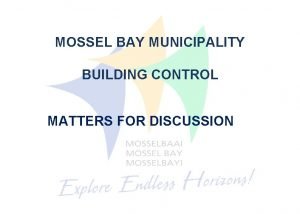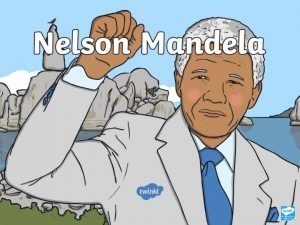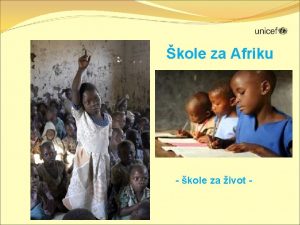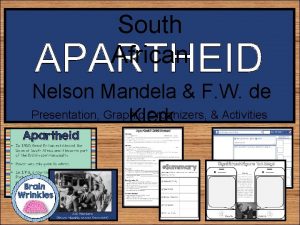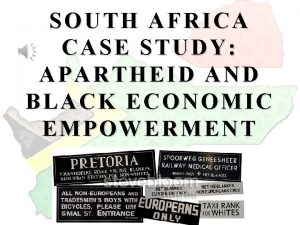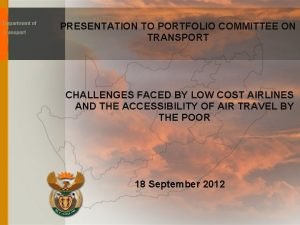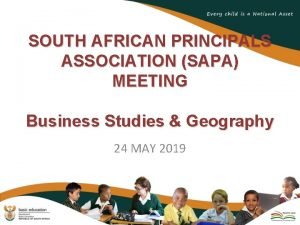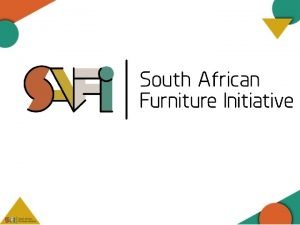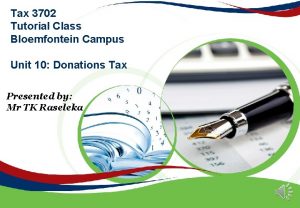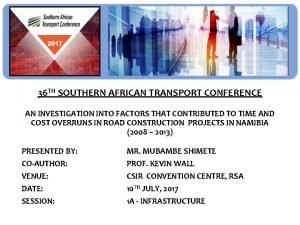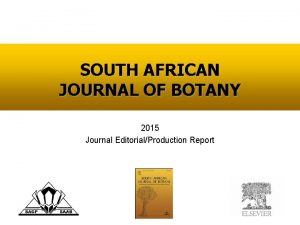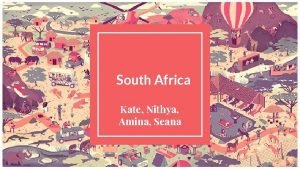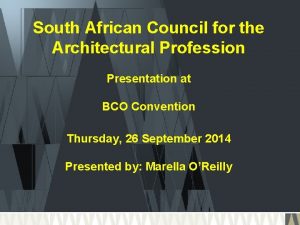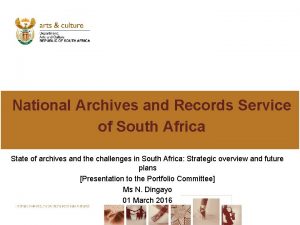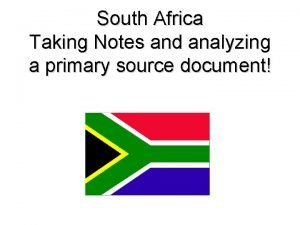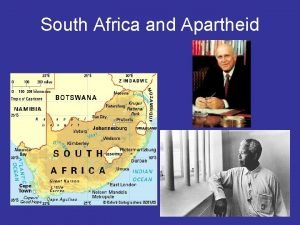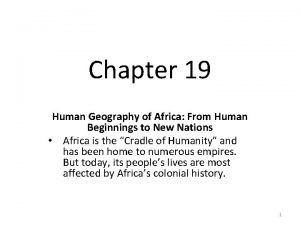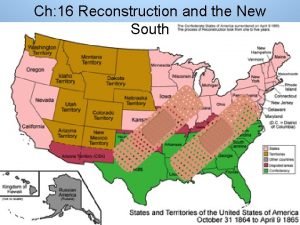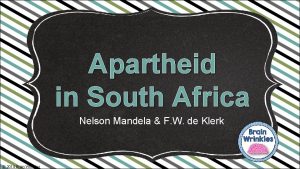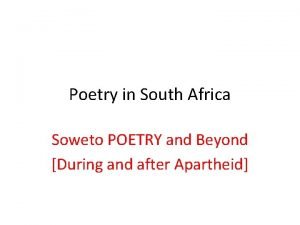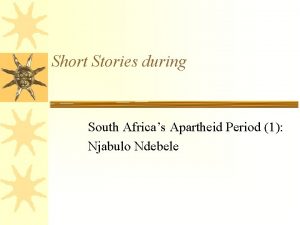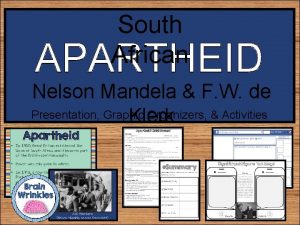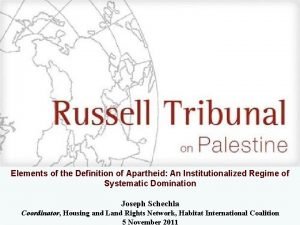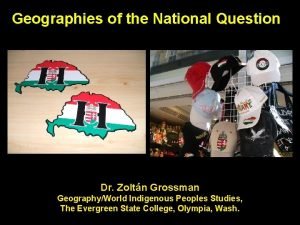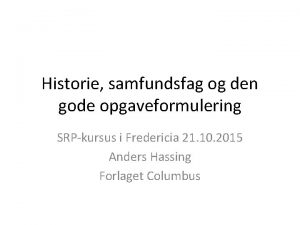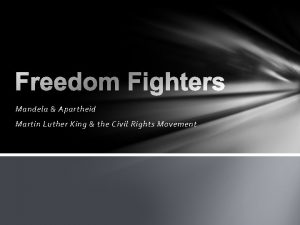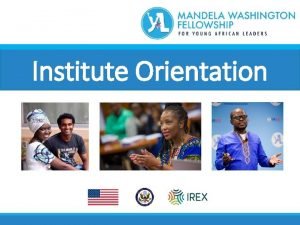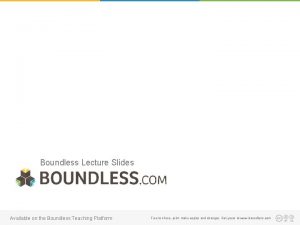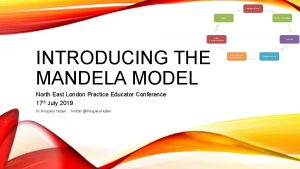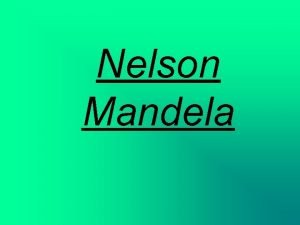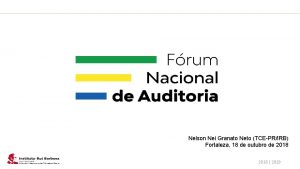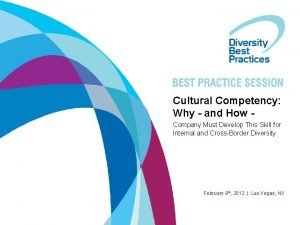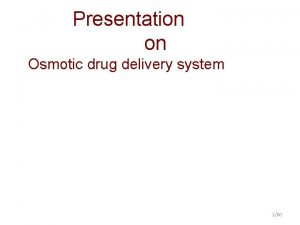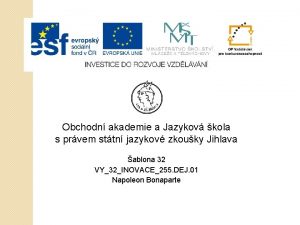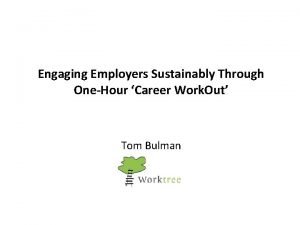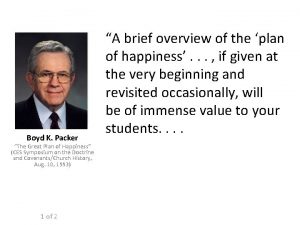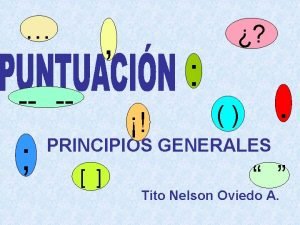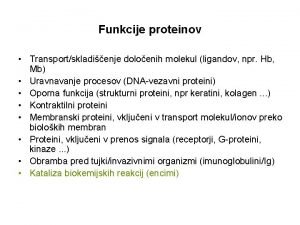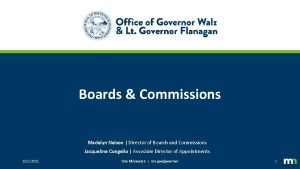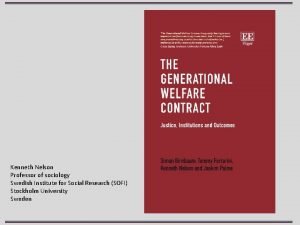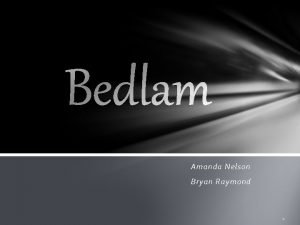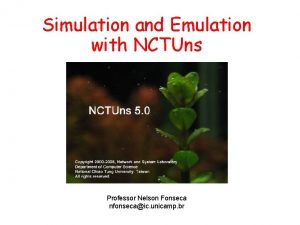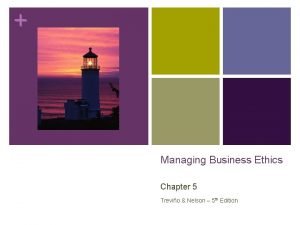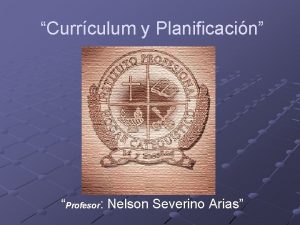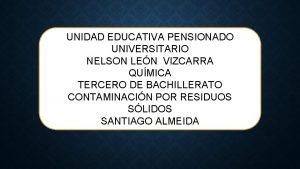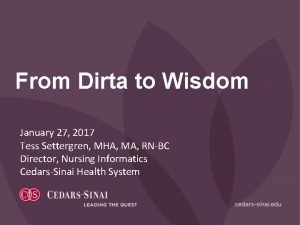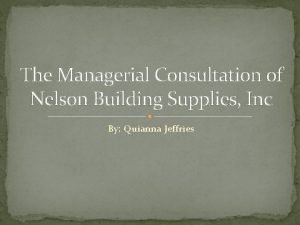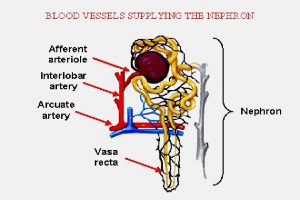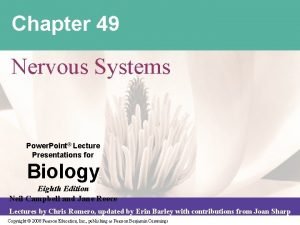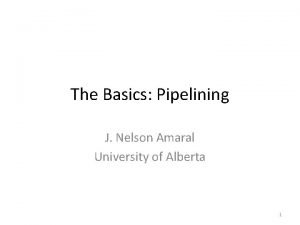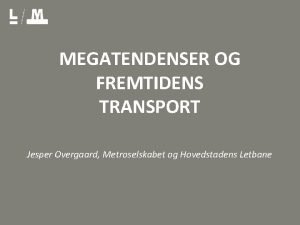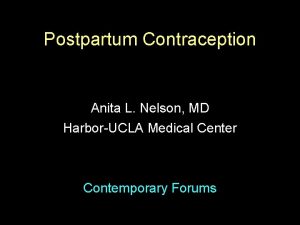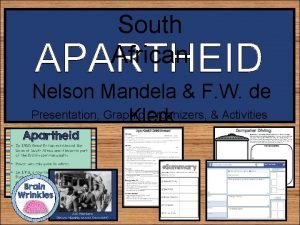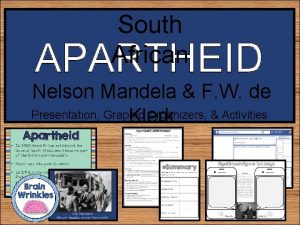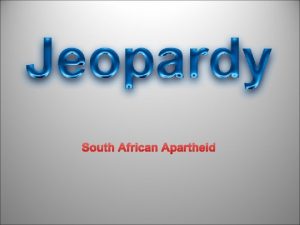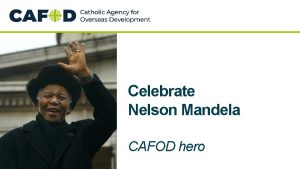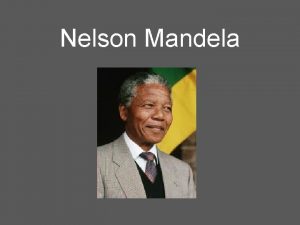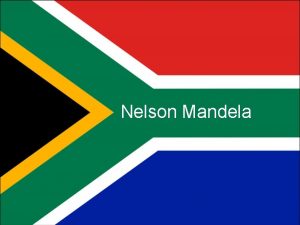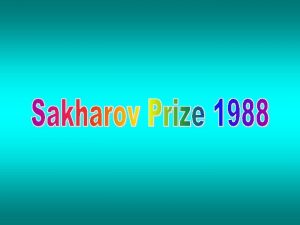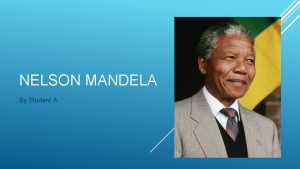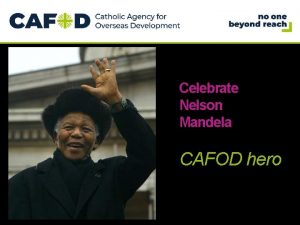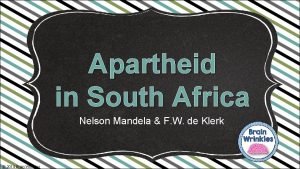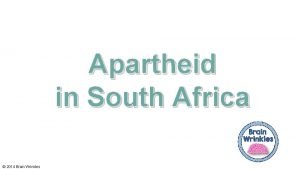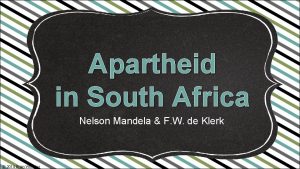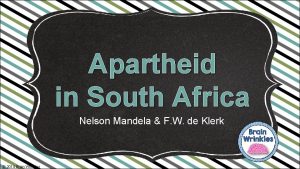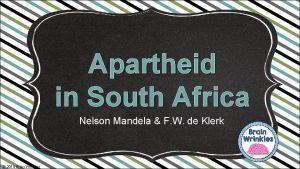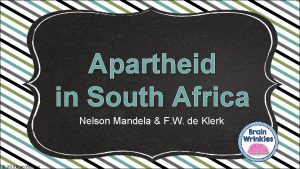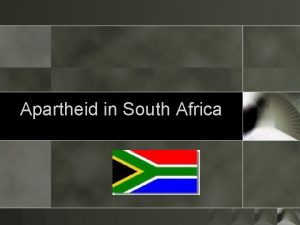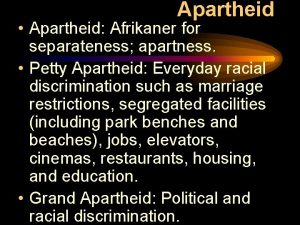South African APARTHEID Nelson Mandela F W de


















































































- Slides: 82

South African APARTHEID Nelson Mandela & F. W. de Presentation, Graphic Organizers, & Activities Klerk


Weekly Agenda: 2 -24 to 2 -28 -20 Weekly Opening: • Journal Writing • Citizenship Word of the Week: Cooperation • Current Events Weekly Work Period: • Review Power. Point whole group on Pan-African and Independence Movement (cont’ from previous week) • Apartheid in South Africa Cloze Notes Students will use the student’s Power. Point to complete cloze notes independently. • Capturing Apartheid Activity The students the students will draw one of the events from the apartheid era in South Africa. In the textbox, they will write a paragraph from their perspective of the event—as if they were right there capturing the picture.

Weekly Agenda: 2 -24 to 2 -28 -20 Weekly Work Period cont’: • Africa’s Facebook Profile Activity Students will create a profile as if they are either Nelson Mandela or F. W. de Klerk. Specific directions on a slide will be given to explain what goes into to each box of the profile. • Significant Figure Text Message Activity The students will write text messages between Nelson Mandela and F. W. de Klerk that were sent after apartheid ended in South Africa. The first message should portray Mandela’s attitude and ideas about rebuilding South Africa after his release from prison. The second message is de Klerk’s response to Mandela’s text. • Haiku Historical Activity The students will write a haiku for key events from this lesson. Teacher will provide an example of what a haiku is—I tell them that they are the “Twitter of poetry” because they are so short (3 lines, 5 -

Weekly Agenda: 2 -24 to 2 -28 -20 Weekly Closing: • Apartheid Comprehension Check The students will complete this handout at the end of the lesson. This will count as a quiz! • #Summary Ticket out the Door The students will write a hashtag for the important vocabulary words on the ticket. They may write more than one for each word. Example: Mandela: #freeatlast #equalrightsforall.

Weekly Assessment/Technology Tools: 2 -24 to 2 -28 -20 • Apartheid Comprehension Check • Recycle It TOTD • USA Testprep (graded assignment; class time is given but can be completed at home) • Edpuzzle Videos (graded assignment; class time is given but can be completed at home) • Discovery Education (graded assignment; class time is given but can be completed at home)

Weekly Homework: 2 -24 to 2 -28 -20 • Africa’s Apartheid Packet (continue working) • Current Event Article (one article critique per week, due every Wednesday) • USA Testprep (graded assignment; class time is given but can be completed at home) • Edpuzzle Videos (graded assignment; class time is given but can be completed at home) • Discovery Education (graded assignment; class time is given but can be completed at home)

Journal Topics: 2 -24 -20 2 -25 -20 2 -26 -20 2 -27 -20 2 -28 -20 Trying to be Fair Not So Good Sport Current Event Wednesday/CNN 10 Practice What You Preach The Coronavirus

Journal Topic: 2 -24 -20 Trying to be Fair Trying to make everyone happy is a major goal when trying to be fair. To be truly fair, one cannot play favorites. Think about a time when you made a decision to be fair even though you knew one person more than the other. (5 or more sentences)

Citizenship: 2 -24 -20: Fairness is defined as being marked by impartiality and honest : free from self interest, prejudice, or favoritism. Talk about a time when you had to make a decision that was fair.

The Civil Rights Act of 1964 https: //www. youtube. com/watch? v=jae. Mr 7 dk 6 OQ&list=PLjn. L 2 NSDUI 6 bxh. LT 7 Dajl-Xkzq. UTC 8 EK&index=17

Condoleeza Rice https: //www. youtube. com/watch? v=v. Mqk. Hq_ 4 e. E 0&list=PLjn. L 2 NSDUI 6 bxh. LT 7 Dajl-Xkzq. UTC 8 EK&index=94

Journal Topic: 2 -25 -20 Not So Good Sport Being a good sport is an example of being fair. Think about a time when an athlete did not exemplify fairness when he or she could have. Explain how this athlete could have better shown fair play in this situation. (5 or more sentences)

Citizenship: 2 -24 -20: Fairness is defined as being marked by impartiality and honesty : free from self interest, prejudice, or favoritism. Talk about a time when you were treated unfairly. What were you feeling at that moment?

Brown vs Board of Education https: //www. youtube. com/watch? v=b. EQ 1 u. G 4 PZc. A&list=PLjn. L 2 NSDUI 6 bxh. LT 7 Dajl-Xkzq. UTC 8 EK&index=25

Dr. Mae C. Jemison https: //www. youtube. com/watch? v=rv. Uf. EQV 7 Xf. I

Current Event Wednesday/CNN 10 2 -26 -20 Three students will be randomly chosen to share out articles. Students who refuse to share out will lose points. (Each student must do one article per week and will receive a current event grade. )

Greensboro Four https: //www. youtube. com/watch? v=YXwvf. Bds gec&list=PLjn. L 2 NSDUI 6 balkz. EUa. Qev. Yj. Imzg. Xe 4 Dx&index=23

Ruby Bridges educational videos for students black history ruby

Journal Topic: 2 -27 -20 Practice What You Preach Many disciplinarians tell students to be fair to others while not practicing what they preach. Think about a time when a teacher or administrator did not display fairness when handling a discipline issue. (5 or more sentences)

Citizenship: 2 -27 -20: Fairness is defined as being marked by impartiality and honesty : free from self interest, prejudice, or favoritism. Talk about a time when you witnessed someone being treated unfairly. How did you respond?

14 th Amendment https: //www. youtube. com/watch? v=Ej 7 TVJ 4 F R 4 E&list=PLjn. L 2 NSDUI 6 balkz. EUa. Qev. Yj. Imzg. Xe 4 Dx&index=35

Emmett Till https: //www. youtube. com/watch? v=8 ojlufr. Qj 2 w&list=PLjn. L 2 NSDUI 6 balkz. EUa. Qev. Yj. Imzg. Xe 4 Dx&index=15

Journal Topic: 2 -28 -20 Just Got Snatched Suppose you received a text message stating your best friend just got snatched away from you forever. How would you respond to this news? How would it make you feel? Explain. (minimum of 5 complete sentences).

Citizenship: 2 -24 -20: Fairness is defined as being marked by impartiality and honesty : free from self interest, prejudice, or favoritism. Define fairness in your own words.

STANDARDS: SS 7 H 1 Analyze continuity and change in Africa. c. Explain the creation and end of apartheid in South Africa and the roles of Nelson Mandela and F. W. de Klerk. © Brain Wrinkles

Reconstruction Amendments https: //www. youtube. com/watch? v=Cpi. H 2 b 92 3 pc

Colin Powell https: //www. youtube. com/watch? v=Cy 7 h. Bru. B F 6 s

TEACHER INFO: CLOZE Notes • The next pages are handouts for the students to use for note-taking during the presentation. (Print front to back to save paper and ink. ) • Check the answers as a class after the presentation. © Brain Wrinkles

Apartheid in South Africa CLOZE Notes 1 Colonization • In the 1600 s, the ___________ colonized South Africa. • South Africa was eventually ___________ from the Dutch settlers (after the Boer War). • In 1685, the first ___________ became visible when a law was passed forbidding whites and Africans to marry in the territory. Power • More European settlers ___________ than to anywhere else on the continent. • In 1910, ___________ established the Union of South Africa. • Governing power was only ___________. • In 1948, a new political party, the ___________, came to power and voted to implement a series of restrictive segregationist laws, known collectively as apartheid. Apartheid • The National Party enforced the ___________ through legislation across South Africa. • Apartheid was a social and political policy of ___________ and discrimination. • In Afrikaans (the language of white South Africans), apartheid means “___________”. Segregation • The policy of apartheid took a ___________ in the country. • It separated South Africa into ___________, restricting where blacks could live, work, travel, sit, go to the bathroom, eat, etc. • Under apartheid, blacks ___________ or participate in government. • What does this remind you of? ___________ Bantu Authorities Act • In 1951, government officials created the ___________, which created “homelands” for black South Africans. • At this time, whites owned ___________, although they only represented 10% of the population. • As a result of this law, ___________ were excluded from in the government. participating © Brain Wrinkles

Apartheid in South Africa CLOZE Notes 2 Life Under Apartheid • Apartheid allowed many whites to ___________, while millions of blacks suffered. • Afrikaners lived in up-scale neighborhoods while native South Africans ___________ or in Bantustans. • Bantustans were ___________(“homelands”) for native Africans to live on. • Bantustans offered a ___________ and were unfit for the large populations forced to live there. • South Africans were unable to leave their Bantustan ___________. A. N. C. • In the 1950 s, the ___________, or ANC, began to actively fight apartheid. • The goal of the ANC was to ___________ of native Africans, although the group had no real power in government. • Eventually, the ANC was ___________ by the South African government and members were often arrested. Mandela • Rolihlahla Mandela was born on ___________ in South Africa. • He was a member of the ___________, and his father was chief of the city of Mvezo. • His father died when he was 9, and he was sent to ___________ who took care of his education. • On his first day of school, his teacher gave him the ___________. • Even though he was the first person in his family to attend school, he was an ___________. • After graduating college, he ___________ and opened the South Africa’s first black law firm • Mandela wanted to defend poor, black South Africans charged with ___________. Non-Violence • Mandela became a prominent member of the African National Congress and participated in numerous ANC-led ___________. • Nelson Mandela ___________, who had used peaceful protests in India. • He urged the ANC members to follow Gandhi’s beliefs in ___________. © Brain Wrinkles

Apartheid in South Africa CLOZE Notes 3 Sharpeville • In 1960, a peaceful protest of apartheid at the town of ___________ as South African policemen fired on the protestors. • ___________ and 180 were wounded. • After this, the ANC and Mandela began to advocate more violent methods of ___________. Imprisoned • In 1962, Mandela was ___________ of sabotage and plotting to overthrow the government. • In 1964, at the age of 46, he was found guilty and sentenced to ____________. • Mandela was sent to prison on ___________. • There, he had to do ___________ and was allowed one visitor every six months. F. W. de Klerk • In 1989, ___________ became president of South Africa. • de Klerk saw that apartheid was hurting the country’s economy and believed the system was unfair and ___________. • Almost immediately, de Klerk ___________ on the ANC. • de Klerk ___________ of many black South Africans who were imprisoned for opposing apartheid law. • In 1990, Nelson Mandela was pardoned by de Klerk and became a free man after ___________ in prison. The End • Mandela resumed his position as president of the ANC and President de Klerk continued working within South Africa’s government to ___________. • The two men worked together to write a ___________ for South Africa. • The Constitution ___________ and granted equality to all South Africans. Peace Prize • In 1993, de Klerk and Mandela shared the ___________ for moving the country peacefully to a nonracial democracy. © Brain Wrinkles

Apartheid in South Africa CLOZE Notes 4 Political Equality • After years of protests, black South Africans began to have a ___________ of their country. • In 1994, South Africa held its first election ___________. • Nelson Mandela became South Africa's ___________(president) and the first elected in a fully representative democratic election. Today • Despite having a stable democratic government and the second largest economy in Africa, South Africa still has ___________. • There is still ___________ and poverty throughout the country. • Most of the wealth is concentrated in predominately ___________. • The rural areas where blacks are predominate are still ___________. © Brain Wrinkles

South African APARTHEID Nelson Mandela & F. W. de Klerk © Brain Wrinkles

Republic of South Africa © Brain Wrinkles

Colonization • In the 1600 s, the British and the Dutch colonized South Africa. • South Africa was eventually seized by the British from the Dutch settlers (after the Boer War). • In 1685, the first policy of white superiority became visible when a law was passed forbidding whites and Africans to marry in the territory.

The arrival of the first European settlers -- Jan van Riebeeck (Dutch East India Company) in Table Bay in April 1652. © Brain Wrinkles

Power • More European settlers came to South Africa than to anywhere else on the continent. • In 1910, Great Britain established the Union of South Africa. • Governing power was only given to whites. • In 1948, a new political party, the National Party, came to power and voted to implement a series of restrictive segregationist laws, known collectively as apartheid.

National Party 1948 © Brain Wrinkles

Apartheid • The National Party enforced the policy of apartheid through legislation across South Africa. • Apartheid was a social and political policy of racial segregation and discrimination. • In Afrikaans (the language of white South Africans), apartheid means “apartness”.

South African Signs During the Apartheid Era © Brain Wrinkles

Segregation • The policy of apartheid took a strong hold in the country. • It separated South Africa into whites and non -whites, restricting where blacks could live, work, travel, sit, go to the bathroom, eat, etc. • Under apartheid, blacks could not vote or participate in government. • What does this remind you of? ?

© Brain Wrinkles

Bantu Authorities Act • In 1951, government officials created the Bantu Authorities Act, which created “homelands” for black South Africans. • At this time, whites owned 80% of the land, although they only represented 10% of the population. • As a result of this law, 9 million South Africans were excluded from participating in the government.

© Brain Wrinkles

Life Under Apartheid • Apartheid allowed many whites to grow wealthy and powerful, while millions of blacks suffered. • Afrikaners lived in up-scale neighborhoods while native South Africans lived in slums or in Bantustans.

© Brain Wrinkles

Life Under Apartheid • Bantustans were artificially created reservations (“homelands”) for native Africans to live on. • Bantustans offered a poor quality of land were unfit for the large populations forced to live there. • South Africans were unable to leave their Bantustan without a passport.

Black South Africans line up at the counter of a government office to get their new passbooks in Johannesburg, South Africa, April 7, 1960. © Brain Wrinkles

© Brain Wrinkles

A. N. C. • In the 1950 s, the African National Congress, or ANC, began to actively fight apartheid. • The goal of the ANC was to increase rights of native Africans, although the group had no real power in government. • Eventually, the ANC was declared illegal by the South African government and members were often arrested.

© Brain Wrinkles

ANC Members (Nelson Mandela, second from right) © Brain Wrinkles

Mandela • Rolihlahla Mandela was born on July 18, 1918 in South Africa. • He was a member of the Thimbu tribe, and his father was chief of the city of Mvezo. • His father died when he was 9, and he was sent to live with a tribal chief who took care of his education. • On his first day of school, his teacher gave him the name of Nelson.

Rolihlahla “Nelson” Mandela A Member of the Thimbu Tribe © Brain Wrinkles

Mandela • Even though he was the first person in his family to attend school, he was an excellent student. • After graduating college, he became a lawyer and opened the South Africa’s first black law firm • Mandela wanted to defend poor, black South Africans charged with breaking apartheid laws.

© Brain Wrinkles

Non-Violence • Mandela became a prominent member of the African National Congress and participated in numerous ANC-led protests against apartheid. • Nelson Mandela admired Gandhi, who had used peaceful protests in India. • He urged the ANC members to follow Gandhi’s beliefs in non-violent protests.

Sharpeville • In 1960, a peaceful protest of apartheid at the town of Sharpeville turned violent as South African policemen fired on the protestors. • 69 people were killed and 180 were wounded. • After this, the ANC and Mandela began to advocate more violent methods of protesting the government.

1960 Apartheid Protest – “Sharpeville Massacre” © Brain Wrinkles

© Brain Wrinkles

© Brain Wrinkles

Imprisoned • In 1962, Mandela was captured and accused of sabotage and plotting to overthrow the government. • In 1964, at the age of 46, he was found guilty and sentenced to life in prison. • Mandela was sent to prison on Robben Island. • There, he had to do hard labor and was allowed one visitor every six months.

© Brain Wrinkles

© Brain Wrinkles

F. W. de Klerk • In 1989, F. W. de Klerk became president of South Africa. • de Klerk saw that apartheid was hurting the country’s economy and believed the system was unfair and needed to change. • Almost immediately, de Klerk renounced the ban on the ANC.

F. W. de Klerk • de Klerk ordered the release of many black South Africans who were imprisoned for opposing apartheid law. • In 1990, Nelson Mandela was pardoned by de Klerk and became a free man after serving 27 years in prison.

F. W. de Klerk and Nelson Mandela © Brain Wrinkles

Mandela Released from Prison © Brain Wrinkles

The End • Mandela resumed his position as president of the ANC and President de Klerk continued working within South Africa’s government to end apartheid. • The two men worked together to write a new Constitution for South Africa. • The Constitution officially ended apartheid and granted equality to all South Africans.

Peace Prize • In 1993, de Klerk and Mandela shared the Nobel Peace Prize for moving the country peacefully to a nonracial democracy.

F. W. de Klerk and Nelson Mandela © Brain Wrinkles

Political Equality • After years of protests, black South Africans began to have a role in the government of their country. • In 1994, South Africa held its first election open to all races. • Nelson Mandela became South Africa's first black chief executive (president) and the first elected in a fully representative democratic election.

Waiting in Line to Vote © Brain Wrinkles

Mandela Voting, 1994 © Brain Wrinkles

© Brain Wrinkles

Today • Despite having a stable democratic government and the second largest economy in Africa, South Africa still has major issues. • There is still economic inequality and poverty throughout the country. • Most of the wealth is concentrated in predominately white urban areas. • The rural areas where blacks are predominate are still terribly poor.

© Brain Wrinkles Rolihlahla “Nelson” Mandela July 18, 1918 – December 5, 2013

Name of a related person, place, group, etc. Draw a picture of the person Write a status about something the person could be doing. Three important things that you should know about me… What are important things that we should know about the person? Write a status about those things. Name: Age: Birthday: Location: © Brain Wrinkles Draw picture of something Write that represents the name of it person #2 Write the name of it #3 Write the name of it I strongly believe in… Write a status about the person’s goals and beliefs. I am fighting against… Write a status about what the person does NOT believe in. Draw picture of possible friend #3 #2 #4

Apartheid Comprehension Check 1. Which European powers colonized South Africa? 2. Which political party came to power in South Africa in 1948? 3. What were the apartheid laws? 4. How did the apartheid laws impact lives? 5. What did the Bantu Authorities Act do in 1952? 6. What was the African National Congress? 7. Who was Nelson Mandela? 8. What was the Sharpeville Massacre? 9. How did South Africa’s government react to the ANC and Mandela? 10. Describe Mandela’s prison experience: 11. Who was F. W. de Klerk? 12. How did he change South African policy? 13. Why did de Klerk and Mandela win the Nobel Peace Prize? 14. What is significant about the year 1994? 15. What is South Africa like today? © Brain Wrinkles

Thank You! Thank you so much for downloading this file. I sincerely hope you find it helpful and that your students learn a lot from it! I look forward to reading your feedback in my store. If you like this file, you might want to check out some of my other products that teach social studies topics in creative, engaging, and hands-on ways. Best wishes, Ansley at Brain Wrinkles

Terms of Use © Brain Wrinkles. Your download includes a limited use license from Brain Wrinkles. The purchaser may use the resource for personal classroom use only. The license is not transferable to another person. Other teachers should purchase their own license through my store. This resource is not to be used: • By an entire grade level, school, or district without purchasing the proper number of licenses. For school/district licenses at a discount, please contact me. • As part of a product listed for sale or free by another individual. • On shared databases. • Online in any way other than on password-protected website for student use only. © Copyright Brain Wrinkles. All rights reserved. Permission is granted to copy pages specifically designed for student or teacher use by the original purchaser or licensee. The reproduction of any other part of this product is strictly prohibited. Copying any part of this product and placing it on the Internet in any form (even a personal/classroom website) is strictly forbidden. Doing so makes it possible for an Internet search to make the document available on the Internet, free of charge, and is a violation of the Digital Millennium Copyright Act (DMCA). Thank you, Ansley at Brain Wrinkles Clipart, fonts, & digital papers for this product were purchased from:
 Mhlalwa mandela
Mhlalwa mandela The south african apartheid
The south african apartheid Introduzione tesina terza media diritti umani
Introduzione tesina terza media diritti umani Nelson mandela flowchart
Nelson mandela flowchart Nelson mandela talents
Nelson mandela talents Kepemimpinan nelson mandela
Kepemimpinan nelson mandela Gandhi and mandela venn diagram
Gandhi and mandela venn diagram Nelson mandela paragraph
Nelson mandela paragraph Nosso medo mais profundo
Nosso medo mais profundo Imagenes de nelson mandela
Imagenes de nelson mandela Which statement best describes apartheid?
Which statement best describes apartheid? Mandela
Mandela Nelson mandela major accomplishments
Nelson mandela major accomplishments Mossel bay municipality bylaws
Mossel bay municipality bylaws Mandela
Mandela Nelson mandela prezentacija
Nelson mandela prezentacija Action without vision nelson mandela
Action without vision nelson mandela South africa flag name
South africa flag name Apartheid cloze notes
Apartheid cloze notes What is apartheid
What is apartheid Saaqis
Saaqis Hartswater bosluis
Hartswater bosluis South african tax
South african tax South african principals association
South african principals association Furniture industry south africa
Furniture industry south africa South african tax
South african tax South african transport conference
South african transport conference South african journal of botany impact factor 2020
South african journal of botany impact factor 2020 Drakensberg mountains map
Drakensberg mountains map Sacap contact details
Sacap contact details Hamilton the surgeon
Hamilton the surgeon South african transport conference
South african transport conference National archives and records service
National archives and records service South african council for natural scientific professions
South african council for natural scientific professions South african freedom charter pdf
South african freedom charter pdf Apartheid definition
Apartheid definition Human geography of africa
Human geography of africa What was apartheid
What was apartheid Apartheid vs jim crow venn diagram
Apartheid vs jim crow venn diagram Apartheid
Apartheid The clothes poem by mongane wally serote analysis
The clothes poem by mongane wally serote analysis Short stories about apartheid
Short stories about apartheid Apartheid comprehension check answer key
Apartheid comprehension check answer key Apartheid definition
Apartheid definition Apartheid definition
Apartheid definition Apartheid
Apartheid Apartheid
Apartheid Srp apartheid
Srp apartheid Martin luther king apartheid
Martin luther king apartheid Old south vs new south streetcar named desire
Old south vs new south streetcar named desire Mandela washington fellowship stipend
Mandela washington fellowship stipend Mandela
Mandela Mandela model
Mandela model Mandela
Mandela Gandhi king and mandela what made non-violence work dbq
Gandhi king and mandela what made non-violence work dbq Nelson nei granato neto
Nelson nei granato neto Nelson-siegel-svensson formula
Nelson-siegel-svensson formula Carol evans federal reserve
Carol evans federal reserve Osmotic agent
Osmotic agent J nelson amaral
J nelson amaral Hortio nelson
Hortio nelson Tony nelson's employer
Tony nelson's employer The great plan of happiness packer
The great plan of happiness packer Nelson oviedo
Nelson oviedo Nelson and cox
Nelson and cox Nelson drawing the power of jesus christ
Nelson drawing the power of jesus christ Madelyn nelson
Madelyn nelson Nelson education ltd
Nelson education ltd Kenneth nelson sofi
Kenneth nelson sofi Bedlam definition
Bedlam definition Nelson
Nelson Anger management nelson
Anger management nelson Trevino and nelson managing business ethics
Trevino and nelson managing business ethics Nelson severino
Nelson severino Campus virtual pensionado universitario
Campus virtual pensionado universitario Nelson data to wisdom continuum
Nelson data to wisdom continuum Nelson building supplies
Nelson building supplies Nelson pediatria bibliografia
Nelson pediatria bibliografia Nelson biology 12 textbook
Nelson biology 12 textbook J nelson amaral
J nelson amaral Jesper nelson
Jesper nelson Anita nelson md
Anita nelson md High temp hydrogen attack
High temp hydrogen attack
